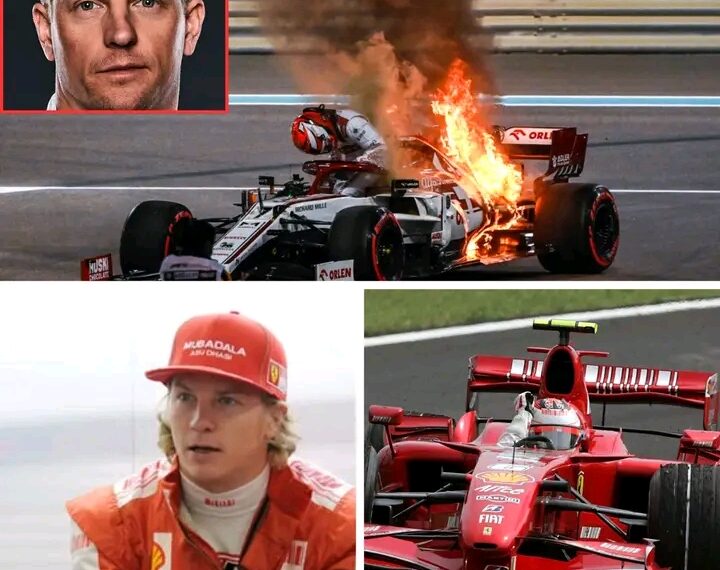He didn’t give speeches.
He didn’t chase the microphones.
He didn’t bend to the media circus or the expectations of the paddock.
And yet, without ever trying, Kimi Räikkönen became one of the most powerful and enduring figures Formula 1 has ever produced — a mystery wrapped in ice, fire, and unapologetic honesty.
In a sport driven by spectacle, where every driver carefully builds their public image, Kimi remained gloriously untouched by the noise. He treated fame like background static. Reporters tried to pull emotion from him; he gave them one-word answers. Teams tried to mold him; he refused to be molded. Rivals tried to provoke him; he simply wasn’t interested.
And that, ironically, made the world obsessed with him.
His silence spoke louder than any press conference. His indifference became legendary. He didn’t try to be a star — people tried to understand him, admire him, explain him. The more he ignored the spotlight, the brighter it shined on him.
Kimi wasn’t a PR-made hero. He was a natural phenomenon.
A storm that arrived quietly and changed everything.
On track, he possessed something the engineers still whisper about: an instinct that couldn’t be measured on telemetry or taught in simulators. His car control looked almost supernatural — as if he could feel the grip of the tires and the mood of the car before they even revealed themselves. Analysts created theories to explain his handling of oversteer. Teammates studied his data. Engineers stared in disbelief.
But the truth was simple: he drove with a purity that no one else dared to emulate.
While other drivers adjusted their style to the team’s expectations, Kimi adjusted the team to his instinct. His feedback was icy and minimal, but accurate. His bravery was unmatched. His speed, on the right day, was a force of nature.
Every overtake was a message.
Every victory was a manifesto.
Every comeback drive was a reminder that genius doesn’t need fireworks — it needs freedom.
Off the track, the legend only grew.
He partied like he didn’t have a race the next day.
He fell asleep during press events.
He climbed onto boats, danced shirtless, disappeared from the paddock, and lived life with the same intensity he brought to the cockpit.
Yet on race day, he became ice again — focused, lethal, unstoppable.
Kimi didn’t hide his flaws. He didn’t fake perfection. He didn’t pretend to be a role model. He was honest, messy, brilliant, and human in a sport that often forgets humanity. And maybe that’s why millions loved him: because he represented something no PR campaign could buy.
Authenticity.
He won his World Championship not with drama, but with steel nerves and raw talent. And when the time came to leave the sport, he didn’t organize a farewell tour or a tearful goodbye. He simply nodded, thanked the team, and walked away into the sunset as quietly as he had arrived.
People expected a final speech.
Instead, he gave them the most Kimi line ever:
“I had fun. That’s all that matters.”
And even now, years after his retirement, Formula 1 still feels his absence. New drivers idolize him. Fans quote him daily. Engineers still reference his style. The myth continues growing because it was never just about the races he won — it was about the way he lived.
The world keeps asking: how did a man who hated attention become the heartbeat of a sport built on attention?
How did someone so silent create a legacy louder than anyone before him?
How did the most uninterested driver become the most unforgettable hero?
The answer is timeless:
Kimi Räikkönen didn’t follow Formula 1’s rules.
He forced Formula 1 to follow his.

